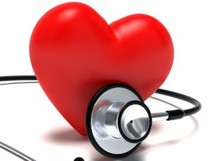
- Uncomfortable pressure or squeeze in the chest
- Pain that spreads through chest, shoulder, upper arms ( Angina )
- Chest discomfort accompanied with dizziness
- Shortness of breath ( especially upon exertion )
Exercise and CHD
Once you are diagnosed with CHD your doctor will generally treat the disease with medication and determine if you are clinically stable enough for exercise. Regular exercise is a very effective secondary treatment (with medication as primary) and prevention for CHD without any side effects medication may have. Exercise can help prevent further narrowing and hardening of the blood vessels which supply the heart, may prevent blood from clotting and reduces the stress on the heart during everyday activities – all of which are beneficial for people with CHD.
Exercise safety
Exercise recommendations for CHD are 30-60 mins per day 3-5 days per week of both aerobic and resistance training. It is best practice to consult an Exercise Physiologist who can assess a person’s exercise capacity, risk profile and tailor a safe and effective exercise program specifically for the individual.
References:
Taylor RS, Brown A, Ebrahim S, Jolliffe J, Noorani H, Rees K, et al. Exercise based rehabilitation for patients with coronary heart disease: systematic review and meta -analysis of randomized controlled trials. Am J Med. 2004;116:682-92
Vanhees L, Rauch B, Piepoli M, van Buuren F, Takken T, Borjesson M, et al. Importance of characteristics and modalities of physical activity and exercise in the management of cardiovascular health in individuals with cardiovascular disease (Part III). Eur J Prev Cardiol. 2012 Dec;19(6):1333-56
Written by Jack Hoffman Accredited Exercise Physiologist

 RSS Feed
RSS Feed
